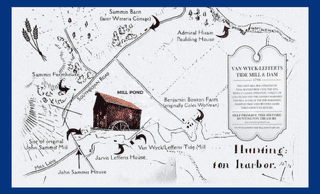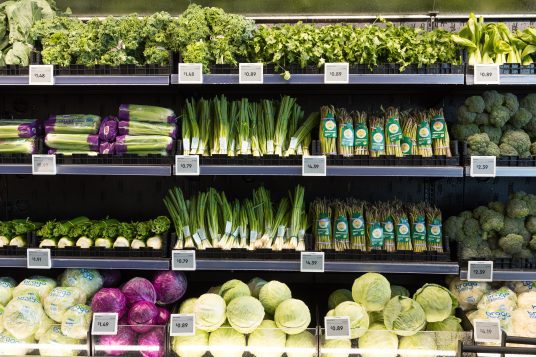Daniel Gale Sotheby’s International Realty (DGSIR) recently wrapped up a month-long fundraiser to collect food and funds for Island Harvest Food Bank and City Harvest, two of the region’s largest hunger relief organizations. This companywide effort brought in a scale-busting 11,778 pounds of food.
Organized by The Daniel Gale Foundation, the competition was as friendly as it was fierce, demonstrated by the line of cars, SUVs, and vans loaded with food, each making a special delivery to Island Harvest’s Melville headquarters. Every office’s haul of non-perishable food was weighed separately to determine which office earned bragging rights for bringing in the heaviest load this year.
“This companywide effort is one of our favorite and most heartfelt major fundraisers of the year,” explained Daniel Gale Sotheby’s International Realty CEO Deirdre O’Connell. “As a group we feel that it is our responsibility and privilege to fill the shelves at the Island Harvest and City Harvest food banks by collecting food during September’s Hunger Action Month. Every year at this time, we come together as a force in support of our less fortunate neighbors across Long Island, from Brooklyn and Queens to the Twin Forks.”
Randi Shubin Dresner, president and CEO of Island Harvest, expressed the continuing need for hunger relief organizations and the tremendous impact donations and volunteer efforts have on families experiencing food insecurity. “While Long Island is home to some of the wealthiest ZIP codes in the nation, one in ten Long Island families experience food insecurity at times. This includes some of our most vulnerable neighbors; from newborns to seniors, veterans and working families. As a community we share a responsibility to make sure that none of our neighbors go without food.”
“New York City continues to face a profound hunger crisis—particularly in the marginalized communities with one in four children experiencing food insecurity,” said Jilly Stephens, City Harvest Chief Executive Officer. “Those numbers surged during the pandemic and remain at historic highs with nearly 1.5 million New Yorkers, including more than 462,000 children, in need of assistance.”
“For more than a century, Daniel Gale Sotheby’s International Realty has prioritized a commitment to community service,” concluded O’Connell. “In 2022 we established The Daniel Gale Foundation as a way to wholly support many not-for-profit organizations on Long Island that provide critical services to our neighbors in need. Giving is a 365-day a year activity for us.”
Following the food drive, Daniel Gale Sotheby’s International Realty again banded together for its annual bowl-a-thon fundraiser. This time, 165 bowlers across 4 different bowling alleys raised $19,000 to benefit the Daniel Gale Foundation.
Donations to Island Harvest and City Harvest can be made online at Island Harvest donation or
City Harvest donation. The Daniel Gale Foundation can be contacted here.





























 This unique chest at 30”long, 18”wide and 16”high was designed and built by Solan using repurposed wood from the iconic Gamecock Cottage at Shipman’s Point in Stony Brook. During the first restoration of the Gamecock cottage more than thirty years ago, Bill was the lead carpenter. Today, Bill is helping with the current renovations of the cottage by handcrafting the detailed moldings for installation on the building’s Swiss-chalet exterior.
This unique chest at 30”long, 18”wide and 16”high was designed and built by Solan using repurposed wood from the iconic Gamecock Cottage at Shipman’s Point in Stony Brook. During the first restoration of the Gamecock cottage more than thirty years ago, Bill was the lead carpenter. Today, Bill is helping with the current renovations of the cottage by handcrafting the detailed moldings for installation on the building’s Swiss-chalet exterior.








 The East Setauket store is one of a handful of new Fresh locations that Amazon has launched in recent months after making some improvements to its business format. The biggest change was the discontinuation of the much touted Just Walk Out cashier-less checkout technology which has been replaced with computerized Dash Carts — smart shopping carts equipped with scanners that track items as customers place them inside —
The East Setauket store is one of a handful of new Fresh locations that Amazon has launched in recent months after making some improvements to its business format. The biggest change was the discontinuation of the much touted Just Walk Out cashier-less checkout technology which has been replaced with computerized Dash Carts — smart shopping carts equipped with scanners that track items as customers place them inside —


